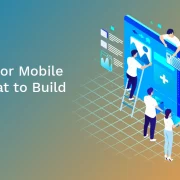
How to Train your Dragon to Move Away from Legacy Business Applications
Simple answer is Business Application training, but it’s not as easy as it seems. The metaphor of course, refers to migrating your IT infrastructure from legacy business applications to new age technologies. These cutting-edge tools and technologies promise and deliver more often than not, improved processes and productivity. The challenge however is to manage the transition from legacy systems to new technologies. If the transition is not managed well, it may be counterproductive and lead to loss of efficiency. What’s more important is training your employees to get up to speed with the new tools.
Two decades ago, the waterfall approach was the most widely practiced project management approach. Today, it is Agile everywhere.
Also, business applications, two decades ago, ran via Client-servers. Today, they run on cloud servers in the form of web and mobile apps. Business application software has become a consumer product.
As you can see, the last two decades have turned business application development on its head. We can hardly recognize it with what it used to be a decade ago. Most businesses today run on legacy systems that are not at par with modern-day requirements.
At the same time, there is also a massive influx of new technologies capable of replacing legacy business solutions. They are faster, smarter, and require users to spend less time on repetitive tasks. Thus, businesses keen on growth must migrate to these modern-day systems to ramp up their operations.
As the world of business application development keeps evolving, businesses will have to train their employees to become well-versed at using these applications. That calls for timely and effective business application training. But new business application training comes at a cost. If not planned and executed properly, it can negatively impact your business productivity.
Challenges faced during migrating legacy systems and how to address them with Business Application Training:
Enterprises are pouring funds and resources into upskilling and preparing their workforce, so they can adapt to the latest business applications seamlessly. Various teaching models like in-class training and on-demand training are also being tried to accelerate learning and productivity. Despite their best intentions, businesses run into several challenges that hamper their ROI in training investments. Here are quick tips to measure training ROI.
Some of the most common challenges are:
- Limited practical training
- Disruption in mission-critical applications
- Employee sentiments towards migration
The right business application training approach can mitigate legacy system migration challenges greatly.
Here are some ways to help your legacy employees migrate to new applications without losing out on productivity.
1. Organize walkthrough sessions
The first step in introducing users to a new application would be to conduct walkthrough sessions. The sessions can be organized by experts from the application vendor or by in-house members with prior experience in working with the application. Ensure that the walkthrough sessions also have a manual that users can go back to, to look up information as and when they need it.
2. Run a pilot project
Introducing a new business application to your users is a sensitive process. If not planned properly, it can bring processes that have been working with clockwork precision to a standstill. It is not recommended, therefore, to migrate to the new applications at once. Users must be given a taste of what to expect while using it in live environments.
A pilot project implemented on a low priority function can help with that. It imparts the experience of working directly with the application while also setting the stage to identify pain points, loopholes, and areas where caution is to be exercised.
To ensure that the pilot project progresses smoothly, several learning approaches can be adopted. For the mobile-first generation, the right modes of learning will include microlearning, blended learning, real-world simulations, scenario-based learning. These can be served in the form of on-demand training or as pre-recorded learning materials.
3. Scale successful pilots
The benefit of running a pilot project is that it helps identify similar operations which can be ramped up using the application. Scaling the pilot project to similar functions helps reduce error instances and also minimizes the need for repetitive learning. Also, as and when the application usage is expanded to other areas, the need for basic training regarding the business application is also minimized.
4. Identify super-users
Super-users are users who are well-versed with the application usage on a day-to-day basis. They are also aware of the hacks that deal with getting the best out of the application. Their prior training or exposure to the application makes them super-users.
Super-users are the go-to resources and can help new users onboard the application much more easily. They can introduce the users to the interface, the right way to use it, and also create awareness about the common mistakes.
While introducing a new application to your users, identify super-users within the team. An in-house super-user can act as a leader who can train new users to ramp up their skills. As they are already adept at using the application, they can also sustain the existing productivity levels.
5. Gather feedback
Feedback from users is what helps identify whether the business application training is heading in the right direction or not. Feedback helps evaluate the critical pain areas users face while using the application. The pain areas can be addressed internally, or support can be sought from the vendors to customize the application.
Gathering feedback also aids in understanding the overall sentiments regarding the use of the business application. If the overall employee sentiment is not positive, corrective measures must be taken to instill confidence in them. Mid-level or senior-level managers will have to step in and create awareness about why the migration is being done and what are the expected benefits of the exercise. That should help employees embrace the new application with optimism instead of hesitance.
To Summarize
Business applications are evolving at a faster rate than ever before. In the past decade alone, we have seen a plethora of innovations become mainstream technologies.
In the coming years, business applications established on legacy systems will have to be modernized. Employees will need training and guidance as to how to go about doing the same. There are several challenges lining the path to training them for the job. The right training approach can negate all those challenges.
Related:
How to Transform Employee Training with Bespoke L&D Solutions
How Can You Use mLearning in Employee Training?
How to Create and Deliver Bite-sized Learning for Enterprise Training
6 Benefits of Scenario-based Training over Traditional Training
Benefits & Use Cases of Mobile Learning in Enterprise Training







